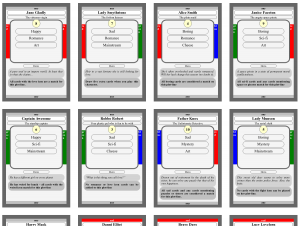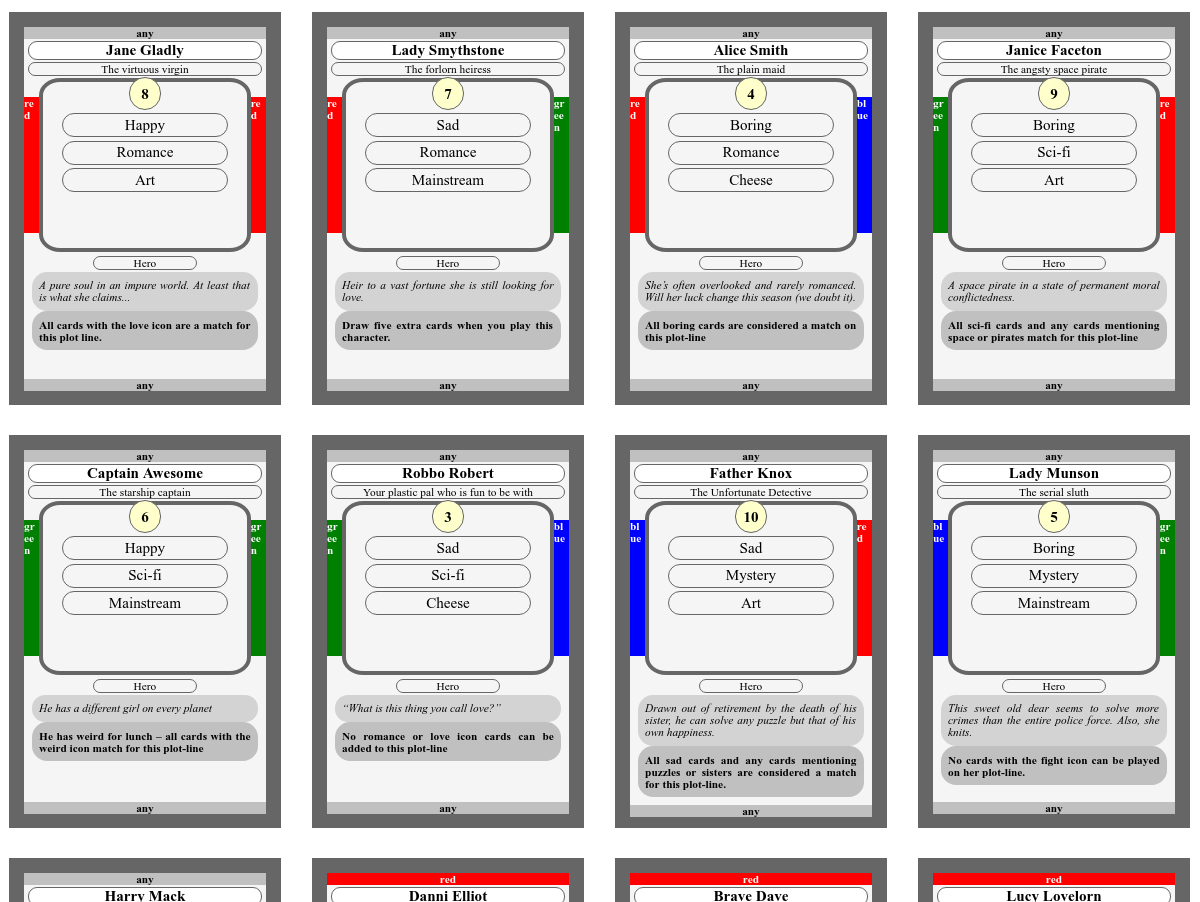I’d like to introduce you to Plot-Lines, the storytelling card game.
You play as a team of writers on a new television series but each of the writers has different ideas about the genre, style, and even characters that should be included. Can you overcome executive meddling, retcons, and characters unexpectedly leaving mid-season to deliver your story? Let’s find out in Plot-Lines.
Why Plot-Lines?
As those that follow me on various blogs might be aware, I am a huge fan of good storytelling. I have been working on a new card game that encourages collaborative storytelling. Not at the level of roleplay games but on a more casual and yet competitive level.
The idea grew out of conversations as the Thanet Creative Tea and Chat events. We had been talking about favourite television shows we enjoyed as children as well as experimenting sometimes with games with a strong story focus. This got me thinking and the result is Plot-Lines.
When you read the rest of this post, remember that I am hearing it in my head in Wil Wheaton’s voice.
How to play Plot-Lines
 Each player starts with five cards. These cards can include characters which are divided into hero, antagonist, and support. Each character that comes into play starts a new plot-line against which plot-twists are played.
Each player starts with five cards. These cards can include characters which are divided into hero, antagonist, and support. Each character that comes into play starts a new plot-line against which plot-twists are played.
Each player also receives three secret objectives which will guide how they try to build out those plot-lines. We will come back to objectives in a moment.
To the right, you will see a screenshot of the early play-testing version of the game which doesn’t have any of the pretty images or icons that I hope the finished game will have. As you can see, the cards have a coloured bar to the right and left. The director wants to see a smooth visual transition from one scene to the next and so plot-twists must (by and large) match the colour of the card that precedes it.
Cards have a genre, an icon that indicates if it is happy, sad, or boring; and another icon that indicated art, cheese, or mainstream. When a plotline ends (either through character death or character exit) you can count the icons to see if it is a “happy, cheesy, sci-fi”, a “sad, artistic, romance”, or some other combination. If that matches one of your objectives then you might be winning.
Cooperative yet competitive
You play with one single shared set of plot-lines and cooperate to take turns adding elements to the story. Each element you add must be explained to the other “writers” as you must convince them that your story addition fits the overall plot and makes narrative sense. If they don’t agree the other players will vote on whether to keep your addition. Which is all well and good but remember that they might vote based on their own objectives instead of the story’s merits. How good are you at selling the idea of a story?
When you are done, you will have created a wild story that busts genres, incorporates cheese, art, and mainstream appeal, and maybe, just maybe, get good ratings.
Pretty soon we are going to start play-testing the game. If all goes well, I will update you on what happens next.


Pingback: Projects I should really get on with • Matthew D Brown
Will this be ready for beta-testing on Thursday?
As you now know, no it was not quite ready. It’s close, I just need to write some more content.